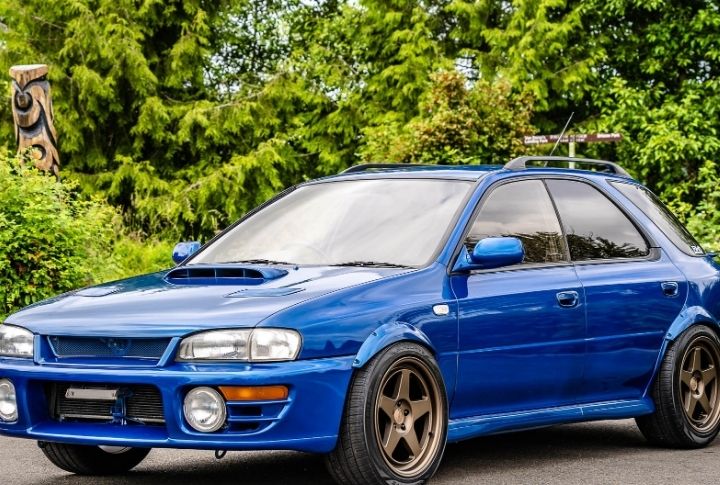
Japanese Wagons That Are True Classics

Japan’s automotive scene is known for its innovation and style, and the world of wagons is no exception. These rare Japanese wagons combine practicality with unique design elements, making them standout choices for enthusiasts and collectors alike. Peruse this gallery to discover 15 cool and rare Japanese wagons.
1967 Datsun 510 ‘Bluebird’

For many, especially in North America, the Datsun 510 was their introduction to Japan’s car industry. Launched in late 1967, it stood out due to its uniqueness among domestic competitors. With lively performance and sharp handling, the 510 quickly gained popularity among young families.
1982 Toyota Tercel 4×4

The Toyota Tercel surpassed the Panda with its smart design, including a six-speed transmission focused on an ultra-low first gear rather than a long top gear. This, combined with a synchronized transfer case, ensured smooth shifts between two-wheel and four-wheel drive. A clever gearing maximized the Tercel’s 1.5-liter engine and minimized wear on the tarmac due to the lack of a center differential.
1986 Nissan Skyline (R31)

Think the Skyline was all about turbos and motorsport? Think again! The Australian-produced Skyline R31 station wagon, built for Australia and South Africa, was a tough, practical vehicle that could handle harsh conditions and carry multiple passengers and gear. Despite its workhorse nature, its rear-wheel drive and smooth 3-liter straight-six engine still offered fun.
1987 Honda Civic Wagon

Similar to Toyota’s Tercel, Honda expanded the Civic into the Civic Wagon. It’s hard to classify—part crossover, part people carrier, big hatchback, minivan, small wagon, or van—but it impressively combines all these elements with its viscous-coupled four-wheel-drive system and elevated stance, making it a decent off-roader as well.
1992 Subaru Impreza WRX STi

In the ’90s and 2000s, while most craved the blue and gold Impreza sedan, the truly cool kids opted for the wagon. It may have been a bit heavier at the back, but in everyday driving, the Impreza wagon was nearly identical to its sedan sibling, with the bonus of taking family trips or dump runs in a six-time WRC champion.
1995 Mazda Capella 626 (Hydrogen)

Mazda explored hydrogen power, debuting with the 1991 HR-X concept. This technology, typically in Mazda’s rotary engines, appeared in models like the MX-5 and RX-8, but its use in the 626 was unexpected. Mazda’s hydrogen efforts seemingly concluded with the 2008 Premacy prototype.
1996 Mitsubishi Galant (Legnum) VR-4

Initially designed for international rallying, the Mitsubishi Galant was soon eclipsed by the Lancer Evolution. This shift let its engineers push performance limits beyond World Rally Championship rules. The final VR-4, released in 1996, left a lasting impression with its specs: it reached 60mph in 5.3 seconds and, without a restrictor, topped 160mph—all in a practical five-door body.
1997 Nissan Stagea Autech 260RS

The name may be long, but this is essentially a GT-R wagon. Nissan’s Autech gave the Stagea (pronounced “Stage A”) a striking makeover, equipping it with the GT-R’s famous twin-turbocharged RB26DETT engine. While officially rated at 275HP, it’s likely pushing over 300HP, especially with JDM tuners involved.
1997 Toyota Caldina GT-T

This rare wagon, Toyota’s rival to the Impreza Wagon, uses parts from the Celica GT-4. A potent 3S-GTE engine helped TOM’s Castrol Supra beat the GT-R in Japanese Touring Car racing and a rally-capable four-wheel-drive system. Despite its motorsport roots, the GT-T’s understated appearance adds to its appeal as a semi-sleeper.
1998 Mazda Familia S-Wagon Sport20

While this lively Mazda isn’t a speed demon, driving it is enjoyable. It features vibrant colors for young families and a zippy 2-liter, four-cylinder engine with 170HP powering all four wheels. In addition to being fun for the whole family at a budget-friendly price, it also has comparable running costs to the MX-5.
1999 Mitsubishi Libero GT

Before Mitsubishi released an Evo wagon, the Mitsubishi Libero GT was the closest alternative. Although less known outside Japan, Asia, and Australasia, it was a JDM version of the Lancer Evolution. With Evo front bumpers, a turbocharged 4G93T engine, and a weight of only 1250kg (2756lb), the Libero GT could hit 60mph in just over 6 seconds, though its thin steel construction made it less durable.
1999 Subaru Outback

Over the years, many lifestyle wagons have claimed they could handle off-road adventures, and some, like the Subaru Outback, truly can. Debuting in 1994, the Outback aimed to counter the SUV craze in America by blending actual off-road capability with everyday convenience. The second-generation Outback became even more exciting with the introduction of a powerful 3-liter boxer engine.
2004 Lexus IS300 Sport Cross

This sleek and refined Lexus IS200 was a small luxury sedan that rivaled the BMW 3 Series. Being compared to the iconic 3 Series was already a win for Lexus, but the IS300 took things further with its powerful 3-liter inline-six engine and a stylish extended-roof option.
2004 Subaru Forester STi

As the ultimate crossover, the Subaru Forester STi combines a family car’s practicality with a rally car’s speed. Its 2.5-liter boxer engine delivers the signature Subaru growl, pumping around 250HP. This power is managed through a six-speed transmission, ensuring every wheel gets its share, regardless of weather.
2005 Mitsubishi Lancer Evolution IX

Adding a station wagon version to the Mitsubishi Lancer Evolution was probably a surprise even to the Mitsubishi engineers. Only 2,500 of each manual and automatic version were produced, and this wagon only weighs 20 kg (44 lb) more than the sedan.


